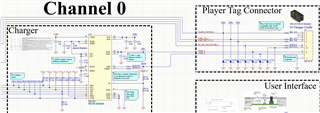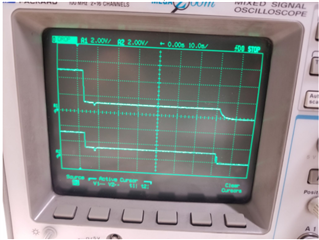We are using the BQ25887 to charge an off-board device. One issue we are observing is that when the "charger system" (which includes the BQ25887) is unpowered and the device to be charged is still attached to the charger, the device to be charged has a ~800uA current draw on the "BAT" line.
To troubleshoot, we have removed TVS21 and C53 and the current draw remains, so the current draw is from the BQ25887.
I could not find any "unpowered" behavior documented in the datasheet. Do you have any further information on why this could be happening AND do you have any suggestion as to how we could remove this issue?
Thanks!





